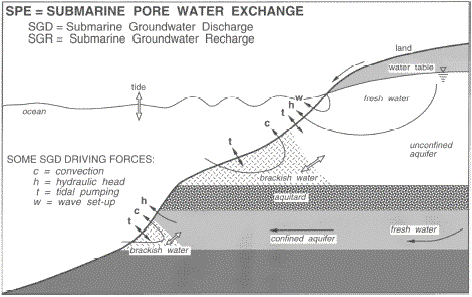Table 1. Summary of some of the components of
SGD, its driving forces, and contributing factors that influence
its magnitude. The divisions are somewhat arbitrary - it is recognized
that many crosscutting relationships are possible.
表1.海底地下水流出(SGD)のいくつかの成分、その牽引力、そしてその大きさを左右する一因となる要因のまとめ。区分はいくぶん任意−多くの横断的な関連がありえることが知られる。
Components
成分 |
Driving Forces
牽引力 |
Contributing Factors
一因となる要因 |
Meteoric waters (fresh)
天水(淡水) |
Hydraulic gradient
動水勾配 |
Topography, Transmissivity, Precipitation, Evapotranspiration
地形、透過率、降水、蒸発散 |
Recirculated seawater (salt)
再循環海水(塩水) |
Hydraulic gradient,
Tidal pumping,
Wave set-up
動水勾配、潮汐のポンプ式作用、波の発生 |
Tidal range, Period, frequency, Wind force, direction
潮差、周期、振動数、風力、方向 |
Connate waters (very salty)
遺留水(濃い塩水) |
Density, Thermal gradient
密度、温度勾配 |
Geology, Geothermal heating
地質、地熱 |
Table 2. Some estimates of terrestrially-derived
fresh SGD on a global scale. Assuming a mean river flow of 37,500
km3/y, SGD ranges from 0.3% to 16% of the global river
flow.
表2.世界規模での陸上由来の淡水海底地下水流出のいくつかの見積り。平均河川流量を37,500 km3/年とみなすと、海底地下水流出は世界河川流量の0.3%〜16%の範囲にある。
Amount of SGD* km3/y
海底地下水流出量(km3/年) |
Estimation Method
見積り方法 |
Reference
文献 |
|
1700 |
Hydrological assumptions
水文学的推定 |
Chandury and Clauer (1986) |
|
100 |
Hydrological assumptions
水文学的推定 |
COSOD II (1987) |
|
2200 |
Literature
文献 |
Berner and Berner (1987) |
|
2400 |
Hydrograph separation, Combined hydrological-hydrogeological
method
水位図での分離法、水文学−水文地質学を合わせた方法 |
Zektser and Loaiciga (1993) and Zektser (2000) |
|
2200 |
Water balance
水バランス |
Shiklomamnov (1999) |
|
1000-3000 |
Water balance
水バランス |
Milliman (pers. comm.) |
|
4500-6500 |
Water balance
水バランス |
Seiler (2003) |
* All estimates are for fresh water SGD; river discharge = 35,000-40,000
km3/y
すべての見積りは淡水海底地下水流出について;河川流量=35,000-40,000 km3/年 |
Table 3. Fluxes of terrestrially-derived water
and recirculated seawater to the coastal zone and shelf expressed
as volumetric discharge per unit time, flux per unit length of
shoreline, and unit area fluxes.
表3.時間当り体積流出量、海岸長当りフラックス、および単位面積フラックスで表わされた、陸上由来の水と再循環海水の沿岸帯と陸棚へのフラックス。
Flux
フラックス |
Fluid Composition/Origin1
流体組成/起源 |
Reference
文献 |
Global Discharge (km3/y)
世界の流量(km3/年) |
Total runoff (rivers 〜94%) =
全流出量(河川〜94%)= |
37,400 |
fresh/terrestrial
淡水/陸上 |
Berner and Berner (1987) |
Fresh groundwater seepage =
淡水地下水浸出量= |
2,4002 |
fresh/terrestrial
淡水/陸上 |
Zektser (2000) |
“intertidal pump” =
『潮間帯のポンプ作用』= |
1,170 |
composite/mixed
混合/混合 |
Riedl et al. (1972) |
“subtidal pump” =
『亜潮間帯のポンプ作用』= |
95,700 |
seawater/marine
海水/海洋 |
Riedl et al. (1972) |
Shoreline Fluxes (m3/m・day)3
海岸線フラックス(m3/m・日) |
Total runoff =
全流出量= |
171 |
fresh/terrestrial
淡水/陸上 |
Calculated using shoreline length = 600,000 km |
Subtidal pump =
亜潮間帯のポンプ作用= |
437 |
seawater/marine
海水/海洋 |
Riedl et al. (1972) |
Intertidal pump =
潮間帯のポンプ作用= |
5.34 |
composite/mixed
混合/混合 |
Riedl et al. (1972) |
Groundwater seepage =
地下水浸出量= |
11 |
fresh/terrestrial
淡水/陸上 |
Calculated from Zektser (2000) |
Measured (Florida) =
測定値(フロリダ)= |
3-35 |
composite/mixed
混合/混合 |
Cable et al. (1997) and Burnett et al. (2002) |
Measured (Australia) =
測定値(オーストラリア)= |
2-8 |
composite/mixed
混合/混合 |
Burnett and Turner (2001) and Smith and Nield (2003) |
Measured (New York) =
測定値(ニューヨーク)= |
30-120 |
composite/mixed
混合/混合 |
Bokuniewicz (unpiblished results) |
Unit Fluxes (m3/m2・y)
単位フラックス(m3/m2・年) |
Seepage meters =
浸出計= |
5-100 |
composite/mixed
混合/混合 |
Calculated from Taniguchi et al. (2002)4 |
Subtidal pump =
亜潮間帯のポンプ作用= |
3.5 |
seawater/marine
海水/海洋 |
Calculated from Riedl et al. (1972) |
Intertidal pump =
潮間帯のポンプ作用= |
195 |
composite/mixed
混合/混合 |
Calculated from Riedl et al. (1972)5 |
1 composition refers to fresh (meteoric) water, seawater,
or a mixture; “origin” refers to driving force, either terrestrial
hydraulic gradients or marine forcing (tidal pumping, wave set-up,
etc.), or a mixture of terrestrial and marine.
組成は淡水(天水)、海水、または混合水をさす;『起源』は牽引力をさし、陸上の動水勾配か海洋による力(潮汐のポンプ作用、波の発生など)、あるいは陸と海の混合。
2 Estimates for the fresh water component of groundwater
discharge to the ocean vary tremendously, see Table 2.
海洋への地下水流出の淡水成分の見積りはすさまじく変動する、表2参照。
3 We used 600,000 km as an estimate of the global
shoreline length.
世界の海岸線の長さの見積りとして、我々は600,000 kmを用いた。
4 Approximately 85% of the measured seepage values
from the coastal zone in this compilation fall in this range
(1-30cm/day).
この編集において沿岸帯からの測定された浸出値のほぼ85%はこの範囲に入る(1-30cm/日)。
5 Calculation assumes an intertidal width of 10 m
and a shoreline length of 600,000 km.
計算は潮間帯の幅を10 m そして海岸線の長さを 600,000 km とみなしている。 |
